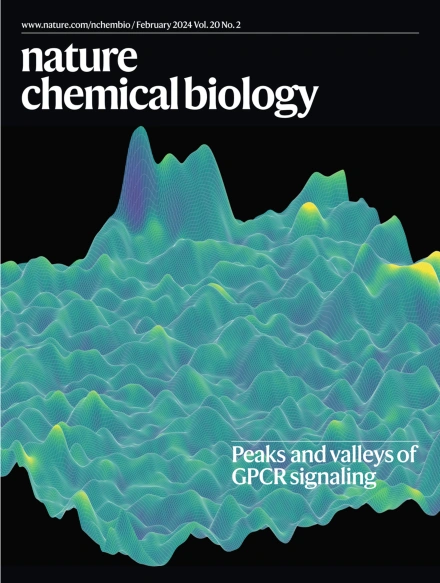A key to sperm–egg union
IF 13.7
1区 生物学
Q1 BIOCHEMISTRY & MOLECULAR BIOLOGY
引用次数: 0
精卵结合的关键
卵子和精子的融合需要卵子表面蛋白(哺乳动物中的 JUNO 或鱼类中的 Bouncer)以及几种保守的精子表面蛋白,包括 IZUMO1、SPACA6、DCST1 和 DCST2。JUNO 和 IZUMO1 的结合是已知的,但不足以实现融合,SPACA6 和 DCST1/DCST2 的具体作用仍不清楚。为了确定可能与 IZUMO1、SPACA6 和 DCST1/DCST2 结合的其他精子表面蛋白,他们对已知在斑马鱼睾丸中表达的约 1400 种蛋白之间的成对相互作用进行了 AlphaFold 多聚物筛选。得分最高的预测相互作用是 Izumo1 与 Spaca6 之间以及 Izumo1 与蛋白质 Tmem81 之间的相互作用。AlphaFold-Multimer 预测了 IZUMO1、SPACA6 和 TMEM81 之间的三聚体,其中 JUNO 能够进入 IZUMO1 的结合位点。然而,根据预测,Bouncer 将与 Izumo1 和 Spaca6 之间界面上的一个不同位点结合,实验也验证了这一点。IZUMO1、SPACA6 和 TMEM81 的共免疫沉淀证实了 AlphaFold-Multimer 的预测,即这些蛋白之间存在相互作用。为了检验新发现的蛋白质TMEM81在受精过程中的作用,研究小组在斑马鱼和小鼠体内产生了Tmem81基因剔除系,结果发现这些动物不育,它们的精子无法使卵子受精。
本文章由计算机程序翻译,如有差异,请以英文原文为准。
求助全文
约1分钟内获得全文
求助全文
来源期刊

Nature chemical biology
生物-生化与分子生物学
CiteScore
23.90
自引率
1.40%
发文量
238
审稿时长
12 months
期刊介绍:
Nature Chemical Biology stands as an esteemed international monthly journal, offering a prominent platform for the chemical biology community to showcase top-tier original research and commentary. Operating at the crossroads of chemistry, biology, and related disciplines, chemical biology utilizes scientific ideas and approaches to comprehend and manipulate biological systems with molecular precision.
The journal embraces contributions from the growing community of chemical biologists, encompassing insights from chemists applying principles and tools to biological inquiries and biologists striving to comprehend and control molecular-level biological processes. We prioritize studies unveiling significant conceptual or practical advancements in areas where chemistry and biology intersect, emphasizing basic research, especially those reporting novel chemical or biological tools and offering profound molecular-level insights into underlying biological mechanisms.
Nature Chemical Biology also welcomes manuscripts describing applied molecular studies at the chemistry-biology interface due to the broad utility of chemical biology approaches in manipulating or engineering biological systems. Irrespective of scientific focus, we actively seek submissions that creatively blend chemistry and biology, particularly those providing substantial conceptual or methodological breakthroughs with the potential to open innovative research avenues. The journal maintains a robust and impartial review process, emphasizing thorough chemical and biological characterization.
 求助内容:
求助内容: 应助结果提醒方式:
应助结果提醒方式:


